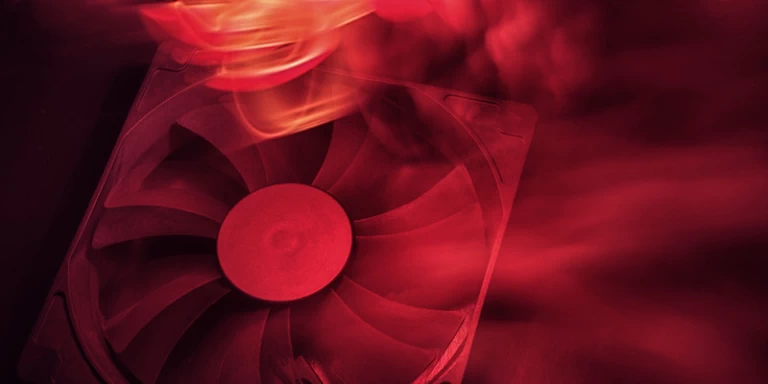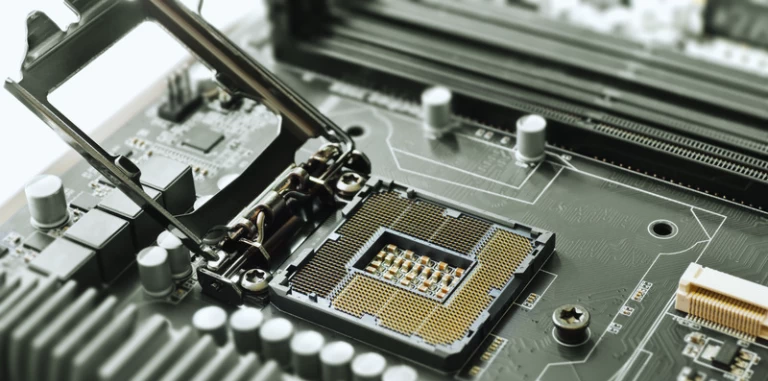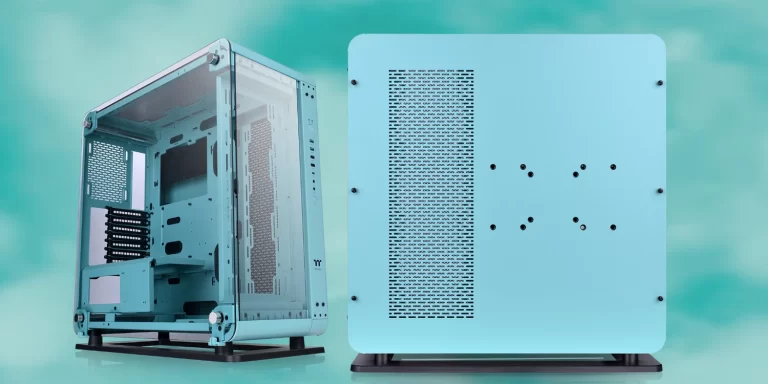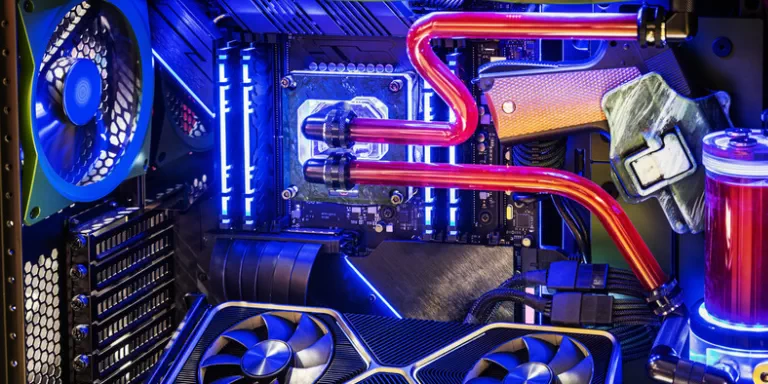As most gamers are aware, it’s relatively common for consoles to get hot while gaming. Once you begin your game, your computer or gaming console performs the millions of calculations necessary to prevent glitches. This process causes fans to spin faster and generates a lot of heat.
What is the normal CPU temperature while gaming?
While the normal CPU temperature depends on the processor model and the game being played, you can expect the temperature to range from 165.2°F to 172.4°F (74°C to 78°C). The maximum temperature can reach 181.4°F (83°C).
In this article, we will discuss:
- Normal CPU Temperature While Gaming
- Causes of high CPU temperatures And Fixing Measures
- Is Your CPU Overheating?
- Upgrading to a new CPU?
Normal CPU Temperature While Gaming
Not all computers are built the same; depending on the manufacturer, one processor might withstand higher temperatures and usage periods than another. Furthermore, different games place varying demands on the computer.

Thermal Design Power
The thermal design power (TDP) is a value measured in watts that describes the power consumption of a CPU under its maximum theoretical load. Generally, your CPU will consume less power than the TDP under lower loads.
The maximum power consumption of your processor will be the TDP when it experiences a steady workload. However, some workload types can have a maximum power consumption above the TDP for a limited time.
TDP correlates to temperature to some degree. CPUs with lower TDPs will often experience lower temperatures than those with higher TDPs. However, the cooling system will affect the value and distribution of this temperature.
For instance, the XBOX Series X console had a 15% TDP budget increase compared to the prior generation. It also had three airflow channels, a heat-sink vapor chamber, and a new fan to control the temperatures.
CPU Temperatures Among Different Models
A study comparing the XBOX Series X and PlayStation 5 showed varying maximum temperatures based on different games.
The XBOX had a maximum System on a Chip (SOC) temperature of 168.6°F (76°C) and memory temperature of 166.6°F (74.8°C) during Call of Duty: Black Ops Cold War. Its maximum surface temperature was 124.7°F (51.5°C) during Assassin’s Creed Valhalla.
The PlayStation 5 had a maximum SOC temperature of 164.3°F (73.5°C) and memory temperature of 199.8°F (93.2°C) while playing Astro’s Playroom. The maximum surface temperature of 127.6°F (53.1°C) was achieved during Demon’s Souls 2020.
Furthermore, a lower-end CPU like the Ryzen 5 3600 will have a 65-watt TDP. The Ryzen 5 3600X increases the TDP to 95 watts. Nonetheless, both have maximum temperatures of 203°F (95°C).
CPU Temperatures Among Different Games
This study compared the average and maximum temperatures of different Android games on a Linux-based CPU temperature control solution. The temperatures varied as follows:
- Farmville: 165.2°F (74°C)
- Robocop: 165.2°F (74°C)
- Dday: 167°F (75°C)
- Bikerally: 168.8°F (76°C)
- Epic: 170.6°F (77°C)
- Anomaly: 172.4°F (78°C)
The game genre will impact your CPU temperature. More CPU-intensive games, such as RTS games Total War and Civilization, will increase the temperatures more than an RPGmaker game. Also, AAA single-player games often use the CPU more than an eSports game.
Factors like more detailed graphics, larger maps, and more actions can drive up the CPU’s temperature.
Causes of High CPU Temperatures And Fixing Measures
The electrical energy that passes through your CPU transforms into thermal energy that increases the temperature. While gaming, your CPU draws more power, generating more thermal energy.
This heat is inescapable if you are a gamer. However, other sources can cause unwanted temperature increases that could damage your CPU.
RELATED: Causes of High GPU Temperatures And Fixing Measures
Dust
Dust can block the fan in your computer, which hinders the cooling mechanisms from completing their function. You can usually hear unusual noises from your fan when you need to clean it.
You can clean your PC by using an air blower or hairdryer. Keep it at its lowest speed and hold it eight inches (200mm) from the fan. The air blower should clear up dust from various internal components. And remember to do this outside, because you don’t want dust flying all over your room.
For any stubborn dust, take a cotton swab dipped in isopropyl alcohol. Reach in and wipe off any remaining dust. Compressed air or vacuum can also clean the dust.
Try to clean your fans once a week to prevent dust accumulation.
Below is the visual guide on how to clean the dust of your PC.
Ventilation
You might have poor ventilation in your CPU if there is no room for airflow. Try some of these tips to increase ventilation:
- Move the console away from the wall with 1-2 feet (0.3~0.6m) of clearance around it
- Install an air conditioning system in the room to reduce external heat
- Place your console in a cooler room
- Elevate the console on a cooling pad
- Add more fans
Install Extra Case Fan
Ideally, you would turn to a professional to install a fan inside your computer. However, you can do it yourself as guidance below:
- Unplug everything from the computer
- Open the PC case
- Check that the fans blow the air inside the computer
- Put the fans to the right position
- Screw them in place
- Connect the power cord to the power connector your motherboard
- Attach the PC case back to your computer
Heatsink
Try applying thermal paste to your computer. If this step does not decrease the CPU temperature, you might have an issue with your heatsink placement.
When the heatsink is not connected to the processor correctly, it will trap the heat. Try removing the heatsink and reattaching it to the processor. Make sure you align it with the processor’s mounting points.
If reattachment does not resolve the CPU troubles, you may need to purchase a new one.
Malware Infection
Malware infections like trojans, viruses, and worms can lower your CPU’s speed. Many use extensive resources that drive up the CPU temperature and make the fans noisier. Look into a system security tool to eliminate and prevent further infections.
Liquid Cooling Kit
The liquid cooling is takes away heat by a liquid agent, such as water. Then, the liquid moves it through a duct to the radiator to become a coolant for recirculating.
RELATED: Different Types of Liquid Cooling
If you experience trouble with your CPU cooler, you will likely need to buy a new one.
Heavy Load
Games that use a lot of RAM can place a heavy load on your CPU. The computer increases the power placed into accessing it, which increases the CPU’s temperature. The fans will go into overdrive trying to lower the temperature.
If this happens for short periods, you probably won’t have to worry about your CPU overheating. However, sustained heavy loads can damage your computer’s processor and internal mechanisms.
In this instance, you will need to buy a CPU with a higher TDP and maximum temperature. Also, you might want to get a memory card upgrade.
Overclocking
Overclocking happens when you try increasing your PC’s performance using the BIOS setting. This act will heat your CPU and potentially cause a system failure. By avoiding the overclocking feature, you can save your CPU from overheating.
Is Your CPU Overheating?
One way to tell if your processor has exceeded the normal CPU temperature while gaming is through a third-party temperature monitoring app. These apps can tell you the CPU temperature boundaries and the real-time temperature so that you can make adjustments. Some examples include:
You could also enter your motherboard BIOS to see the temperature of your CPU. To do so, restart the system and press F10 or DEL to check the PC’s health status.
The vendor of your CPU will likely have software to help you check your temperature. For example, you could use Ryzen Master Utility or Intel Extreme Tuning Utility. These programs will tell you the current temperature and the limit.
If you would rather look for signs of overheating, see if your computer has an overheating alarm. Your computer might reboot or show a blue screen if the CPU has overheated as you run programs. Also, your fan will work harder to lower the temperature.
Upgrading To A New CPU?
If you find that the above methods do not regulate your CPU’s temperature, you could try playing less CPU-intensive games.
If you want to return to your regular gaming habits, it would be best to upgrade to a new CPU that can withstand higher power loads. You may also wish to buy a new PC or console.
Final Thoughts: Normal CPU Temperature While Gaming
On average, you can expect your CPU temperature to range from 165.2°F to 172.4°F (74°C to 78°C). Generally, it would help if you did not let it exceed 181.4°F (83°C). Nevertheless, the precise temperature range depends on the manufacturer and the types of games you play.
If you find your CPU temperature exceeding safe values regularly, check if it has:
- Dust accumulation
- Poor ventilation
- Improper heatsink placement
- Malware infection
- Problem with the liquid cooling kit
- Overly heavy loads
- Overclocking
Once you correct these issues, your CPU should operate in a safe temperature range. You can use software to monitor the precise temperature or check for warning signs to see if you need to make any adjustments. Continual problems might mean you need to get a new CPU.
Now that you know all about the normal CPU temperature while gaming, you can optimize your processor’s performance and game as much as you’d like.












